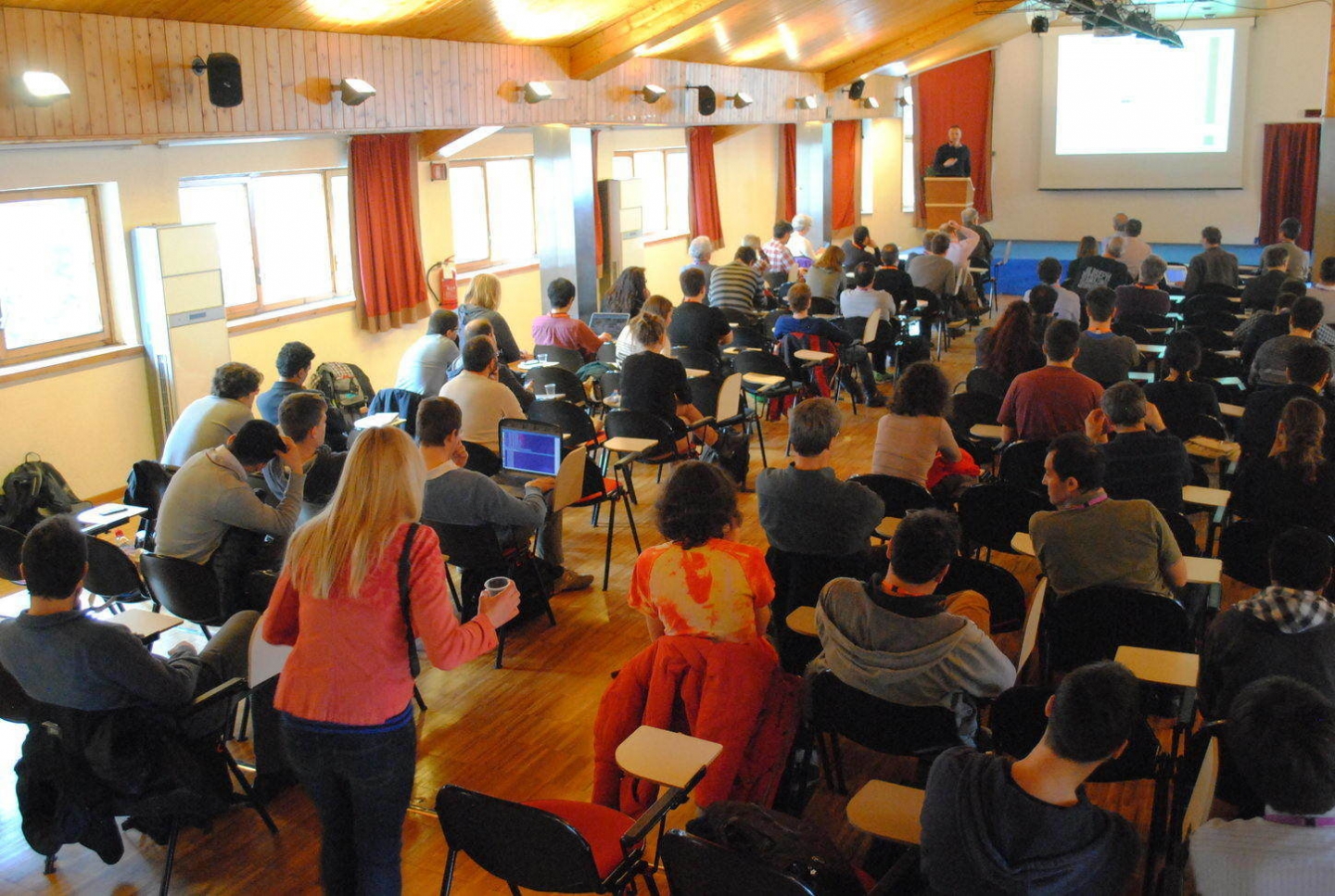The 52nd Rencontres de Moriond conference took place in La Thuile, Italy, from 18 March to 1 April. The first week, which ran until 25 March, was devoted to the theme "Electroweak interactions and unified theories", and the second session was based on the theme of “QCD and high energy interaction”.
The four main experiments at CERN have been presenting many fresh results, including the first ones with full statistics – that is, including the full 13 TeV dataset available so far. These latest results were able to benefit from the exceptional performance of the LHC and accelerator complex in 2016, which was far beyond expectations. The final integrated luminosity – indicating the cumulative number of potential collisions – totalled around 40 fb-1 each in ATLAS and CMS (whereas the target for the whole year was 25 fb-1). This represents the highest amount of data ever collected at any hadron collider in history. Moreover, thanks to an exceptional machine availability, and several new ideas and production techniques incorporated in the operation of LHC, the instantaneous peak luminosity topped out at around 1.4 x 1034 cm-2s-1, 40% above the design value.
2016 has been the first full year of data-taking at a beam energy of 6.5 TeV, therefore the highest collision energy ever reached at a particle collider.
ATLAS
The ATLAS collaboration has presented first results obtained with a new dataset that is almost three times larger than that available at the time of the last ICHEP conference, held in August 2016. This significant increase in data volume has enabled many searches for new physics beyond the Standard Model (SM) of particle physics. Among the key highlights were the results of searches for supersymmetric particles, which have now excluded particle masses reaching 2 TeV for the first time.
Searches for heavy particles decaying to "jets" of hadron particles probe the structure of quarks at energies never reached before, setting lower limits for their masses at 6 TeV. Searches for the rare Higgs boson decay to two muons, which test the fundamental SM prediction of different Higgs-boson-to-lepton couplings for different lepton generations, are now approaching the sensitivity required to observe a signal. Many results from precise measurements of the properties of the known SM particles were also shown, including the first measurement of the mass of the W boson with similar precision to the previous best result from a single experiment.
The measurement tests the SM via so-called virtual corrections through the interplay between the W boson, top-quark and Higgs-boson masses, all precisely measured by ATLAS. In both the cases of new particle searches and precision measurements, no significant deviations from SM predictions have been observed, allowing stringent constraints to be placed on theories of new physics.
CMS
The CMS collaboration has presented more than 35 new results, most of which used the full 2016 dataset. The analysis of the Higgs boson decaying into four leptons or two photons channels has provided new measurements of total and differential cross sections, which result in agreement with Standard Model expectations within current uncertainties. The four-lepton analysis also provides a new measurement of the Higgs mass, which is more precise than the current world average measurement from Run 1.
Searches for associated top-Higgs production in final states with multiple leptons have provided direct evidence for the existence of a top quark-Higgs coupling, and the measured signal strength is consistent with standard model expectations.
The measurement of the angular coefficient P5' in the flavor-changing neutral current decay of B mesons is in agreement with theoretical predictions and compatible with previous LHCb results of a similar study. The first measurement of the top-quark mass and an updated measurement of the ZZ total and differential cross sections with full Run 2 statistics were also presented. CMS has also released more than twenty direct searches for new physics using the full 2016 data sample. The search for electro-weakly interacting supersymmetric particles in final states containing multiple leptons, for the first time, probes masses beyond 1 TeV.
The exotic searches have also provided stringent new limits on many scenarios including dark matter, new types of quarks, vector bosons and gravitons.
LHCb
The LHCb collaboration presented several important new results. Besides an update of the measurement of the rarest decay of a particle containing a b quark ever observed, and the exceptional observation of a new system of five particles all in a single analysis, the LHCb collaboration presented the most precise single measurement of the CP-violating phase φs which sets the scale for the difference between properties of matter and antimatter for particles made up of b and s quarks, known as Bs mesons, using the full Run 1 data set.
Furthermore,the results of an unprecedented study were shown for the first time: collisions between protons and helium nuclei injected near the interaction points were exploited to measure the production rate of antiprotons, providing an important input to searches for dark-matter signals in space.
ALICE
The ALICE collaboration has presented recent results from large samples of proton-proton (p-p), lead-lead (Pb-Pb), and proton-lead (p-Pb) collisions collected in 2015 and 2016. One of the new results concerns the azimuthal asymmetry of the production of J/Psi mesons: the results show conclusively that heavy quarks directly “feel” the shape and size of the interaction region of nucleus-nucleus collisions where an asymmetric quark-gluon plasma medium – mostly made of light quarks and gluons – is produced.
Also, ALICE has shown results on the azimuthal distributions of pions, kaons, protons, and phi mesons in Pb-Pb collisions, which allow to determine the pressure and density in the quark gluon plasma. In addition, several results were presented on the multiplicity dependence of particle production showing that some of the effects that are attributed to quark-gluon plasma formation in Pb-Pb collisions are also seen in high-multiplicity p-p collisions. This result represents a tantalising hint that a quark-gluon plasma may even occasionally be formed in collisions of protons.

